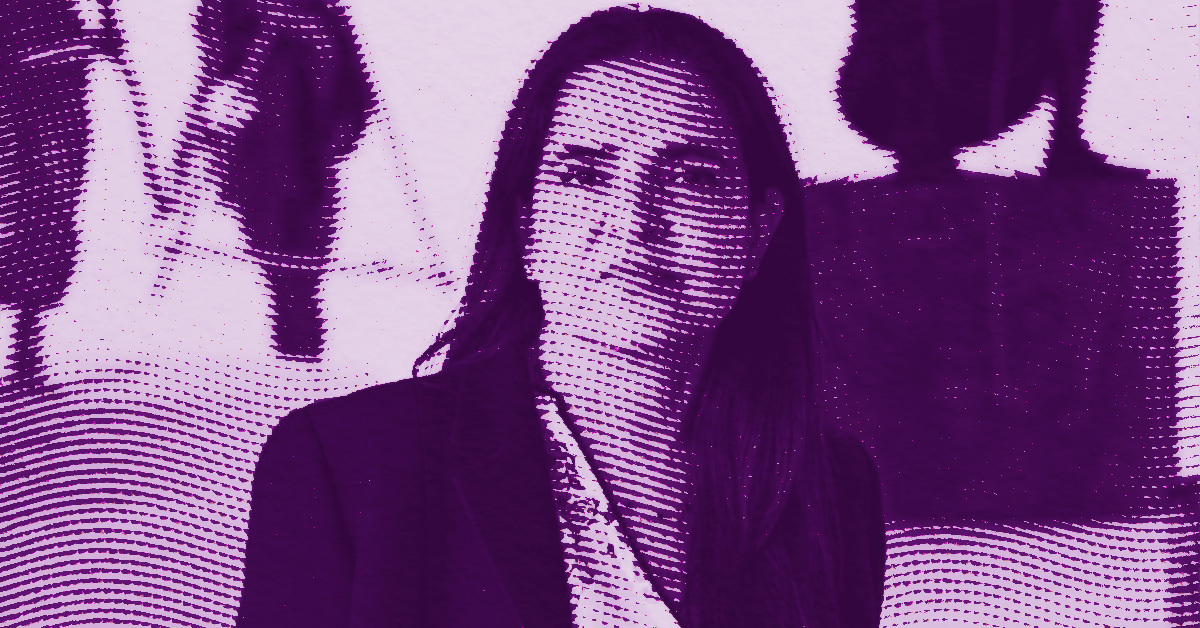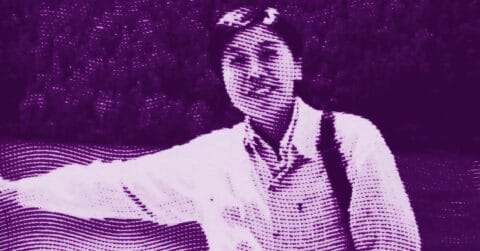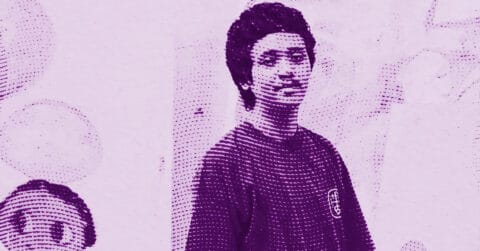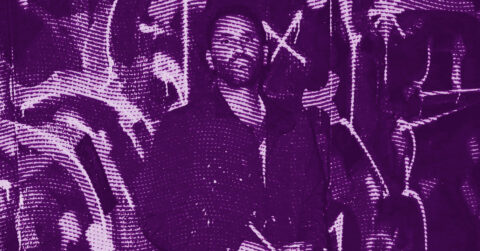Listen to me carefully, you bunch of snobs. Bharti Kher is not an artist one immediately understands, but a creator whose work demands that we abandon our certainties to enter a territory where bodies transform, where identities fragment and recompose before our eyes. This British woman born in 1969, settled in New Delhi since 1993, has built an artistic practice that defies any attempt at hasty classification. Her hybrid sculptures, her paintings with bindis, and her textile installations confront us with a disturbing truth: we are all multiple beings, caught between imposed roles and unfulfilled desires.
Kher’s art does not merely represent this multiplicity; it physically embodies it in materials that seem to breathe, in forms oscillating between human and animal, between the sacred and the profane. When she applies thousands of bindis on the skin of a dying elephant or drapes resin-soaked saris around absent bodies, she is not creating ethnic decoration for Western galleries. She forges a plastic language that questions our assumptions about identity, gender, and cultural belonging.
This ability to shake our convictions stems from the artist’s personal experience but far exceeds the limits of the biographical. Kher grew up in the English suburbs, daughter of Punjabi immigrants, before returning to India as an adult. This reverse migratory trajectory feeds her art with a productive tension: she is simultaneously inside and outside, familiar and foreign to each culture she inhabits. But reducing her work to this single autobiographical dimension would be a mistake. The artist herself rejects this simplistic reading: “It’s easy to say that displacement in my work reflects my personal life, but everyone has it, even people who live here” [1].
Kher’s genius rather lies in her ability to universalize this experience of the in-between, making it a mirror of our contemporary condition. Her hybrid creatures, Arione with her equine hoof and shoulder holster, Arione’s Sister carrying her shopping bags like wings, are not allegories of immigration but incarnations of our inner multiplicities. They reveal what the artist calls “the multiple self”: the truth that we all play several roles, often contradictory, some chosen, others imposed.
Architecture and psychoanalysis: the spaces of the unconscious
This exploration of multiplicity finds a particularly striking resonance when viewed alongside architectural theories of domestic space and Freudian discoveries about the structured unconscious. Modern architecture, since Le Corbusier, has theorized the house as a “machine for living,” a functional space where each room corresponds to a determined use. This rationalized conception of domestic habitat comes into direct collision with Kher’s universe, where interiors become theaters of impossible transformations.
Let’s take her installation Bloodline (2000) [2], this red glass line built with 30,000 melted red bangles, a silent testimony of the violence suffered by women during the Gujarat riots in 2002. The traditional architectural space, designed to protect and shelter, becomes in Kher’s work the receptacle of a traumatic memory. The bangles, everyday feminine objects that normally jingle in a delicate melody, are here frozen in glass, transformed into a mausoleum. Domestic architecture thus reveals its psychoanalytic dimensions: it not only houses bodies but also the unsaid, repressions, and silenced violences.
This permeability between the intimate and the political, between architectural space and the unconscious, runs throughout the artist’s work. Her sculptures of women draped in saris hardened with resin simultaneously evoke ancient Venuses and Egyptian mummies. These “sari-women” inhabit the exhibition space like architectural ghosts, revealing absence at the heart of presence. The sari, a traditional garment without seams, becomes under her hands a rigid sculptural volume that traps as much as it reveals the female form.
The psychoanalytic dimension emerges with particular acuity in her Chimera series [3], these casts of heads and faces covered with wax then broken to reveal their inner layers. The Half-Spectral Thing, a cast of her mother’s head, offers an archaeology of the intimate that recalls Freud’s analyses of the “heimlich” and its unsettling reverse. By molding the maternal face, Kher does not seek to preserve a resemblance but to explore the fundamental strangeness of the other, even the closest. The process reveals the resilient organic substance lining the inside of the mold, a striking metaphor for the unconscious that resists any attempt at definitive mapping.
Architectural space in Kher’s work functions like the Freudian unconscious: it is layered, contradictory, haunted by spectral presences. Her installations transform galleries into eerie domestic spaces where the intimate reveals itself as political and where the familiar tips into the strange. This approach finds its peak in her balancing works, like Consummate Joy and a Sisyphean Task, where disparate materials, raw wood and red jasper, copper and steel, find a precarious balance evoking both Calder’s mobiles and Freud’s analyses of the work of civilization. Architectural balance becomes a metaphor for psychic balance: fragile, temporary, constantly threatened, but necessary for survival.
Epistolary literature and the language of bindis
The second dimension shedding remarkable light on Kher’s work comes from her relationship to ancient epistolary literature, particularly Ovid’s Heroides [4]. This connection is no accident: the artist developed a whole series of paintings with bindis inspired by this collection of fictional letters written by abandoned heroines of Greek and Roman mythology. This reference reveals an essential dimension of her practice: the transformation of the bindi into a writing system, a coded language capable of carrying the female voice across centuries.
Ovid, when writing the Heroides around 15 BCE, made a revolutionary gesture: giving voice to the silent women of the masculine epic, allowing Penelope, Medea, Dido to tell their version of the story. These desperate love letters, filled with anger and resignation, are among the first examples of literature written by a man from a female point of view. Kher takes hold of this epistolary tradition to create her own “letters,” composed not of words but of bindis applied in complex configurations on painted panels.
This translation from the verbal to the visual operates a fundamental transformation of the traditional bindi. This forehead ornament, a cultural and religious marker in the Hindu tradition, becomes under Kher’s brush an element of abstract writing. Each bindi functions like a letter, each constellation of dots like a word or a sentence. The artist herself describes this practice as the creation of a personal “Morse code,” a secret language that allows her to “speak in tongues, speak in code, be both ambiguous and open.”
This cryptographic dimension of Kher’s work reveals a particularly subtle strategy of resistance. In a society where female speech remains often constrained or censored, she invents an alternative communication system that escapes dominant codes while remaining readable to those who know how to look. Her paintings with bindis function as testimonies: beneath the apparent decorative lies a ciphered writing that carries the anger, desires, and dreams of contemporary women.
The Heroides series transforms this intuition into a coherent artistic project. Each panel becomes a letter addressed to an absent recipient, using the language of bindis to transpose into our time the voice of Ovidian heroines. Lenticularis Over Mountain evokes dark clouds and the secret rhythms of an interrupted correspondence. I’ve Been to Hell and Back traces in its lined recesses the territories of loving suffering. These works telescope temporal and spatial scales: from the molecular to the galactic, from the intimate antique to the contemporary political.
The invention of this visual language allows Kher to resolve a fundamental contradiction of contemporary art: how to give shape to female experience without falling into essentialism, how to speak from a culturally marked position without locking oneself into exoticism? The bindi becomes her answer: culturally situated yet plastically universal sign, it allows all semantic displacements while keeping its original symbolic charge.
This strategy reaches its climax in works like Virus, a series started in 2010 and planned to conclude in 2039. Each year, the artist adds a fragment of prophetic text accompanied by a composition of bindis, creating a long-term chronicle of the mutations of our time. The bindi here becomes the agent of positive contamination, the vehicle of a collective memory in formation. Just as Ovid’s letters crossed centuries to reach us, Kher’s configurations carry messages meant for future recipients, ciphered testimonies of our uncertain present.
The alchemy of materials and forms
What strikes in Kher’s approach is her ability to make seemingly incompatible materials dialogue to create objects of disturbing coherence. Fiberglass and adhesive bindis, resin and vintage saris, Plaster of Paris and beeswax: each work operates a transmutation that evokes both medieval alchemy and contemporary chemistry. This material hybridization serves a precise aesthetic and political purpose: to show that identities, like substances, can transform under the effect of creative processes.
The Elephant from The Skin Speaks a Language Not Its Own perfectly illustrates this alchemy. The animal, molded in fiberglass according to a modern industrial process, regains a sacred dimension thanks to the thousands of bindis covering its skin. These small adhesive elements, produced en masse for the fashion market, reclaim their original symbolic charge as they spread over the body of the dying elephant. The transformation operates in two directions: the traditional animal becomes a contemporary art object, while the commercialized ornament regains its ritual dimension.
This capacity for metamorphosis reveals a particularly modern conception of cultural identity. Against essentialisms that fix traditions in immutable forms, Kher shows that cultures live through exchange and mutual contamination. Her bindis move from Hindu spirituality to Western conceptual art without losing their evocative power. Her saris transform into sculptures without ceasing to carry the memory of the female bodies that inhabited them.
This fluidity between cultural registers perhaps finds its most accomplished expression in Animus Mundi, this hybrid Venus with a buffalo head whose mouth lets flow a scarlet sari hardened with resin. The work condenses in a single form the ancient Western statuary, Hindu iconography, and South Asian textile traditions. But this synthesis carefully avoids the pitfall of decorative syncretism: it rather reveals the deep correspondences between symbolic systems apparently foreign to each other.
Kher also manipulates time with remarkable virtuosity. Her sculptures seem simultaneously archaic and futuristic, as if they came from a civilization where evolution took different paths. Arione and her sister evoke as much prehistoric mother goddesses as science fiction cyborgs. This temporal indeterminacy allows the artist to escape historical assignments: her creatures belong neither to mythological past nor technological future, but inhabit an expanded present where all possibilities coexist.
Art as a laboratory of the multiple
The conception that Kher develops of art as a “situation” rather than as a finished object illuminates her working method. Her studio indeed functions as a laboratory where she tests reactions between disparate materials, where she experiments with the conditions of balance between contradictory forms. This scientific approach to artistic creation leads her to keep detailed notebooks on the properties of each substance used, noting their behaviors under different climatic conditions as a chemist would record the results of her experiments.
This methodological rigor serves an ambitious aesthetic project: to demonstrate that art can produce specific knowledge about the real, irreducible to that of the human or exact sciences. When Kher spends three years researching images of the blue whale’s heart to create An Absence of Assignable Cause, she does not just document; she explores the limits of empirical knowledge and the possibilities of creative imagination. The sculpted organ, covered with turquoise and green bindis, becomes an allegory of the human heart in its most enigmatic dimensions.
This artistic investigation ultimately manifests in her balancing sculptures, these precarious assemblies where each element depends on the others to maintain the whole in suspension. These works function as scaled-down models of complex systems, revealing the invisible interdependencies that structure our existence. When a blacksmith’s hammer is balanced atop a granite cone, held by the counterweight of a few ceramic bottles, the installation evokes both Calder’s mobiles and contemporary theories about networks and self-organized systems.
These formal experiments lead to a philosophy of existence that runs throughout Kher’s work. For her, living is constantly maintaining unstable balances between contradictory forces: tradition and modernity, belonging and uprooting, conformity and resistance. Her sculptures embody this dynamic conception of identity by proposing open forms, capable of evolution and metamorphosis.
Kher’s art thus reveals its deeply political dimension: it offers alternative models of subjectivity, unprecedented ways of inhabiting the contemporary world. Faced with the identity assignments that characterize our era, she opposes the creativity of multiplicity, the fertility of hybridization, and the beauty of instability. Her impossible creatures teach us that fully existing means accepting never perfectly coinciding with oneself; it means cultivating this inner strangeness that makes us available to the other.
Towards an aesthetics of metamorphosis
Bharti Kher’s work ultimately outlines an aesthetic of metamorphosis that responds to the challenges of our globalized era. In a world where borders become porous, identities multiply and fragment, and cultures mix and transform, her art proposes conceptual and sensory tools to apprehend these mutations without simplifying them.
Her bindis function as universal connectors, able to link apparently incompatible universes. Her sculpted hybrids embody emerging new subjectivities, these fluid identities that escape traditional categories. Her textile installations reveal the persistence of the corporeal in an increasingly dematerialized world. Together, these creations form a coherent corpus that reinvents the possibilities of contemporary art.
What distinguishes Kher from other artists exploring post-colonial or feminist issues is her ability to avoid the pitfalls of didacticism and resentment. Her art does not denounce; it transforms. It does not claim; it proposes. It does not protest; it metamorphoses. This creative stance, inherited both from Tantric philosophy and Western conceptual art, enables her to reach a broad audience without betraying the radical nature of her message.
Bharti Kher reminds us that art, at its best, acts as a chemical revelator: it brings forth what was latent, it gives form to what remained unformulated. In her expert hands, the bindi becomes again what it has never ceased to be: a window onto the invisible, a point of contact between worlds, a mark of recognition between souls in metamorphosis. Her entire oeuvre bears witness to this simple and revolutionary truth: we are all beings in becoming, inhabiting multiple bodies, dreaming of other possibilities. Sometimes a visionary artist is all it takes to help us see it.
- Art Review, “Bharti Kher”, March 2010.
- The Guardian, “Bharti Kher: Alchemies Yorkshire Sculpture Park”, June 27, 2024.
- Third Text, “Intimate Estrangements: ‘Bharti Kher: The Body is a Place’ at the Arnolfini”, February 6, 2023.
- Hauser & Wirth, “Uncertain States: A Conversation with Bharti Kher”, Sculpture Magazine.
















